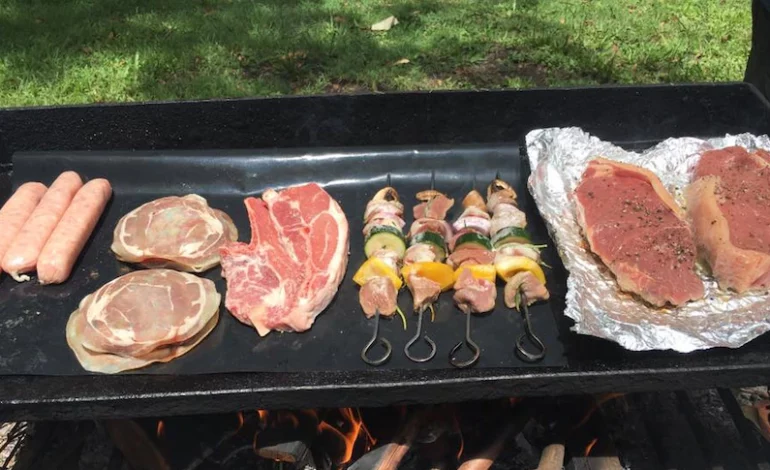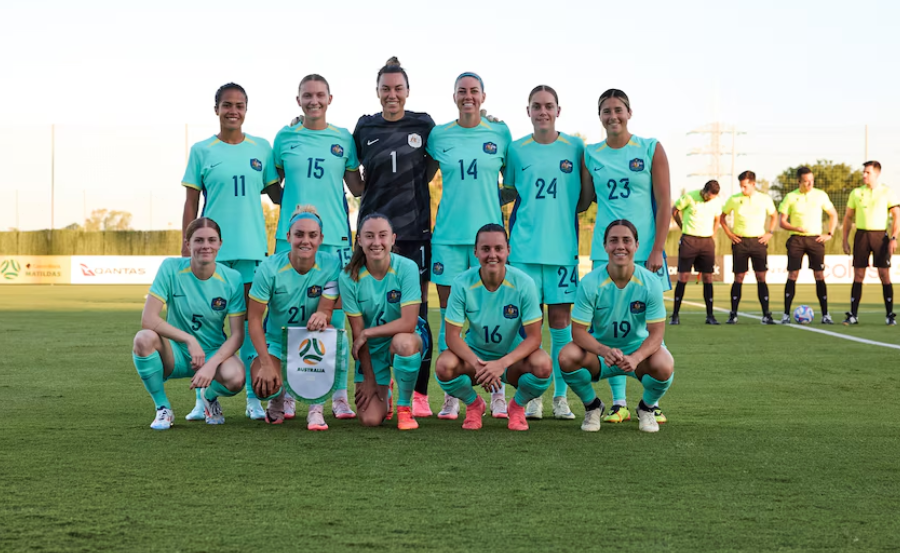Cost of meat starts to slowly come down as prices for farmers collapse

Beef steaks are about 10 per cent cheaper and demand is rising for those, but sadly for barbecue lovers beef and lamb sausage prices have barely moved at all.
The biggest mover is the leg of lamb, down 13.5 per cent from a year ago based on retail figures from Nielsen IQ.
Consumers keen on a roast have jumped on those and consumption is up more than 40 per cent.
Lamb cutlets are only down 5 per cent, however, so you might have to wait a bit longer for that special treat.
Farmers angry about the gap
Farmers say the modest falls in retail prices over the past 12 months are nothing compared to the collapse in livestock prices and the supermarkets should have discounted meat sooner.
Lamb prices have fallen 37 per cent and cattle are down a massive 65 per cent year-on-year, based on key indicators for the saleyards nationally.
Andrew Dunlop runs cattle on Bungarby on the Monaro, but previously worked for supermarkets and exporters in the red meat industry.
The retail price of meat had been tracking up over the past few years as drought led to lower supply and saleyard prices hit record levels.
When the drought ended, sheep and cattle numbers built up again and prices in the saleyards began to fall.
Now it is drying off again as the El Niño weather system takes hold, and farmers are selling their stock to avoid being caught without feed for them.
Call for supermarkets to cut prices
Dubbo stock and station agent Graham Anderson called on the supermarkets to cut prices to help raise demand for all those sheep and cattle.
“We want people to eat more meat, and I think that would be very good for the health of the industry,” he said.
A Woolworths spokesperson said prices were being cut.
“We have reduced the price of 45 different red meat products to help our customers’ budgets go further, including our lamb leg roast, which is now $10 per kilo, the lowest price since 2018.”
Woolworths attributed the high meat prices to an increase in meat processing costs, including labour, transport, electricity and packaging.
Supermarkets also have contracts with some farmers to supply meat directly and lock in prices for the long term, a Woolworths spokesperson said.
“We partner directly with our suppliers to agree fair livestock prices that reflect market dynamics, as well as the high quality of their lamb,” they said.
A Coles supermarket spokesperson said their focus was on supplying products at the best price for customers.
“We know cost of living is the number one focus for our customers right now and we continue to invest in providing value in our stores and online,” they said.
The spokesperson said meat specials were being changed each week.
Check out your local butcher
Independent butchers can sometimes respond more quickly to changes in the saleyard prices.
Matt Halsall is a farmer who runs a butcher shop in Bordertown, South Australia.
He kills lambs for farmers who are saving the meat to eat rather than sending them off to the saleyards, where prices have been under $10/head.
“They see it as more viable to fill their own freezers than it is to try and sell them at the markets,” he said.
Jason Morley farms outside Geurie in Central West New South Wales, where he breeds second-cross Dorset lambs.
He is optimistic despite the difficult situation.
“Compared to last year, our prices are probably half, but in the current conditions it could be a lot worse,” he said.
“Farming is a game of ups and downs. You just have to ride the highs and bunker down with the lows and just keep on going.”
SOURCE: ABCNEWS





